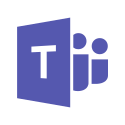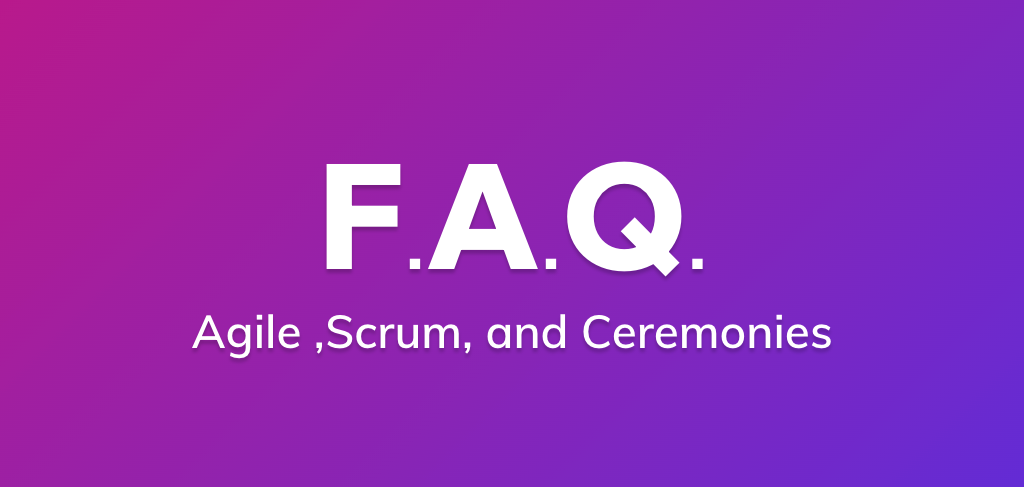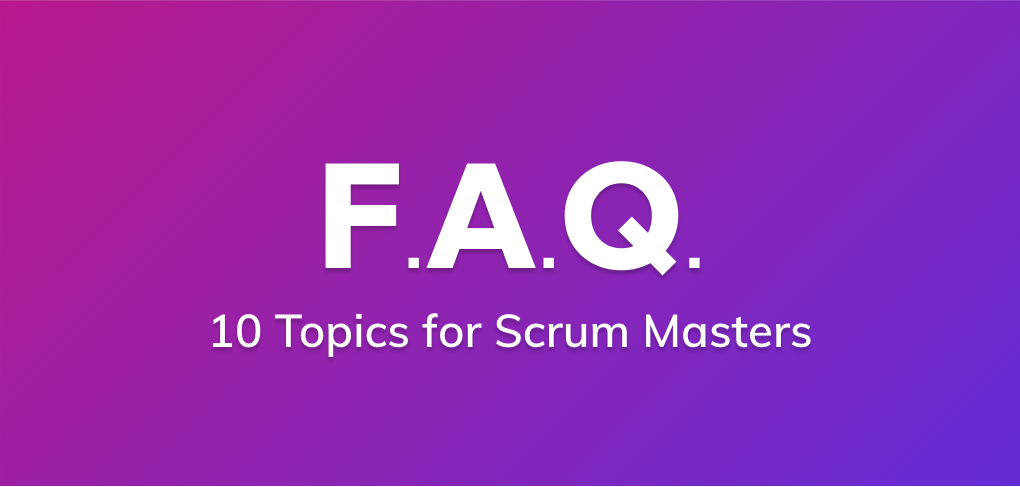
2022 Agility Report Insights
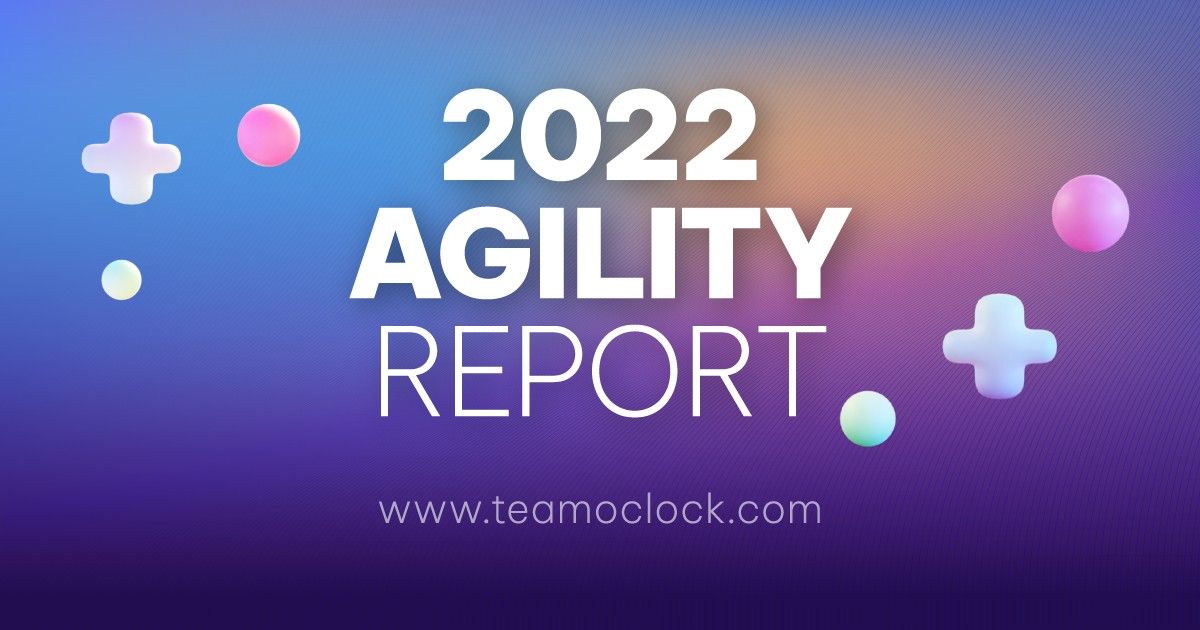
We used the 2022 Agility Report we released on January 2023, to produce some insights on scrum meetings and agility posture. We tried to keep both the report and insights tool agnostic and focus instead on scrum team behaviors.
So let's get started!
Agility posture insights
These insights reflect the team's actual time on scrum events. This actual time on scrum events and how the team chooses to distribute their efforts around scrum and agility showcase the team's maturity over scrum.
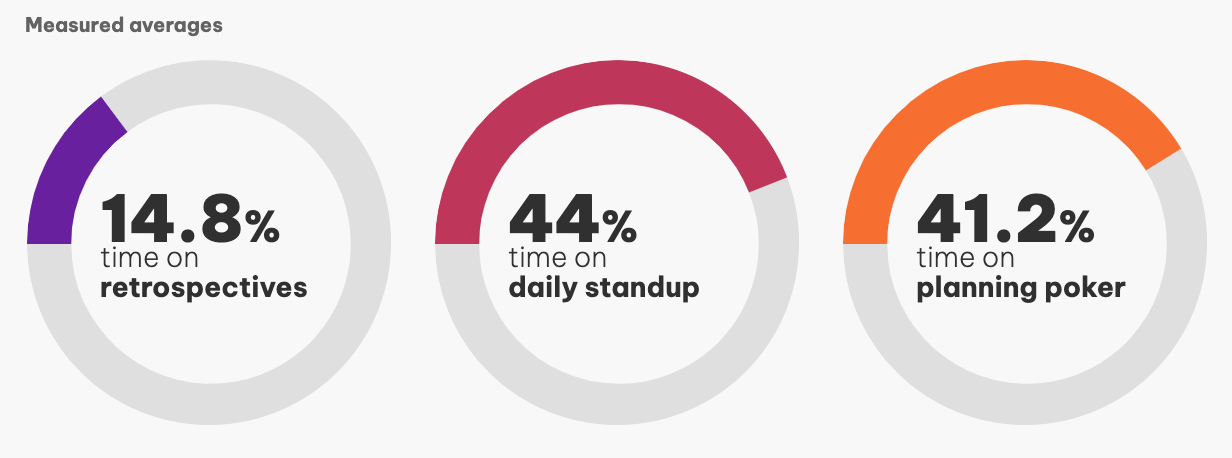
What we see in the agility report is that:
Teams engage in ALL scrum meetings offered (retro, standup, planning poker). Essentially, teams back up their intention to actually work in an agile way, putting the effort and intention through the three core scrum meetings.
The engagement rate is that of teams starting to understand agile and scrum practices. Based on the Company Agility study the average team is starting to gain a grasp of what agile is and take action to balance the scrum meetings performed.
Teams are interested in alignment meetings the most, performing alignment meetings almost 4 times more often than retrospection. The daily standup comes first, aiming at alignment over delivery. The planning poker comes next, targeting effort estimation alignment.
Retrospection is not something teams forget. Teams are interested in getting better. The retrospection rate shows that at least one retrospective is held for every 4 daily standups.
Overall, checking the agility posture metrics, we see that teams are deliberate about investing in scrum meetings. It's not that one type of meeting tramps over the other. This is happening either due to knowledge of scrum events or due to agile champions in the team that help to shape the overall posture. The agile manifesto, which these meetings stem from, is almost a quarter of a century old, and this reflects in adoption.
Scrum meeting insights
Now let's dive into the specifics of each scrum meeting type.
Retrospective meeting insights
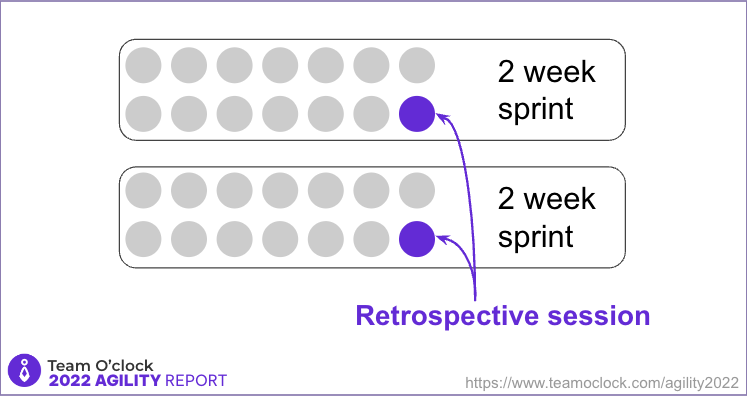
On a high level, we see that teams perform a retrospective two times a month. Roughly this means one retrospective every 14 days, conveniently fitting to a two-week sprint session. Two-week sprints are the most commonly used development iterations.
Diving a bit deeper we see that three action items are created in each retrospective session. Few action items mean that the team can focus on growth at a healthy pace, not interrupting their day-to-day work. Teams are mature enough to focus their efforts to smaller-achievable action items than to commit to more improvements simultaneously which might derail their focus.
The next metric comes to support the team's maturity! Teams follow up on their action items by resolving them at a healthy pace! As new action items are added, almost at the same rate existing action items are resolved. With almost 3 action items resolved per retrospective session, teams are deliberate in taking action and working towards their growth goals.
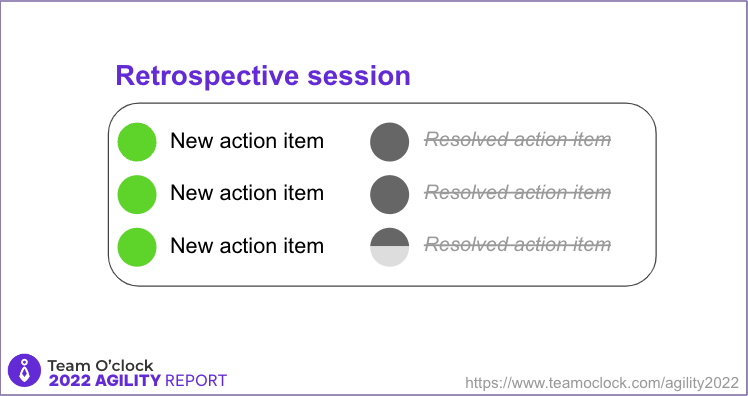
Finally, teams invest time to share their notes during a retrospective. The metrics support this behavior both for synchronous and asynchronous meetings for remote teams. Checking the numbers we see that:
For a synchronous retrospective, teams spend almost half of their time each member adding their notes about the period in introspection
For an asynchronous retrospective, more than a day is spent on adding notes. 32 hours are assigned for adding notes, meaning that members of a remote team - around the globe - have for sure 8 hours of a working day to add their remarks.

Investing that time in sharing notes means that, members care for their improvement and feel safe to share their thoughts.
Daily standup insights

Starting with daily standup we see that the average scrum team size is that of 7 to 8 members. Essentially, teams are pretty populated with members and stay well within the suggested team size of 5 to 10 members. This size means that teams are small enough to avoid complicated communications within and big enough to manage workload.
Taking a deeper dive, we see the signs of maturity and planning when it comes to the daily standup scrum meeting.

Teams align on their work in progress, 3 times a week. This is a maturity sign as teams adjust the meaning of "daily standup" to fit their schedules and avoid pointless meetings, e.g. by actually performing a daily standup.
Teams performing a synchronous daily standup are optimal in sharing their daily updates, spending a total of 10 minutes per roundup. The suggested maximum daily standup duration is 15 minutes, so teams nail it by staying focused within the timeframe.
Asynchronous standup is adopted by almost half of the teams. This is another maturity sign, as teams adjusted their rituals to fit a remote work setting. Additionally, this means that almost 45% of the scrum teams are working in a remote setting.

Checking the breakdown for asynchronous daily standup for remote teams we see:
2 out of 3 teams using a standup-specific app for their async meeting (in our case Team O'clock). A standup-specific app offers the benefit of having all members' updates in a single place.
1 out of 3 teams using their work chat app for async daily standups. A chat app means that members don't need an extra tool to share their updates, they already use what they are accustomed to.
Planning poker insights

Planning poker sessions focus on team alignment. Checking the report results we see that on average teams need some improvement in estimating work effort. Still, the numbers display that teams are actively trying to collaborate and improve around estimation.
Checking the actual numbers we can validate the above case.
Vote alignment is right above average at 68%. This means that there is some vote deviation within the team. This could be either due to the fact that each estimated task is not analyzed by the team, or each team member doesn't have the full perspective on the work needed for the voted task.

Estimated tasks are voted closer to "big" work needed, sitting between 5 and 8 on the Fibonacci scale. As good practice dictates any task effort above 8 is susceptible to further breakdown into more tasks, allowing the team to work on a smaller increment.
Teams examine thoroughly the tasks in a planning poker session, which is backed by the low number of tasks estimated per session. Ideally, entering an estimation session you want the task to be fully refined regarding product, function, affected pages, etc. - what we call the Definition of Ready. For tasks at that state, the team can usually walk through the available information and quickly jump into voting. In case this information is not there, the team needs to discuss and define the missing details.
Closure
Team agility as measured through the scrum meetings these teams are performing has the following characteristics:
Team commitment to adopting scrum, performing all the available scrum meetings.
Team deliberation and planning according to needs, supporting the teams in their own workflow, whether that is sync/async, in their chat app of choice, or not.
Team interest in growing, performing retrospectives, and actively following up to improve on decided action items.
A need for better alignment in delivering increments expressed via task estimation misalignment and thorough examination of each task.


The meeting facilitator
for your remote teams
Efficiency, collaboration, and speed
with AI-assisted retrospectives, daily standups, and planning poker meetings.

